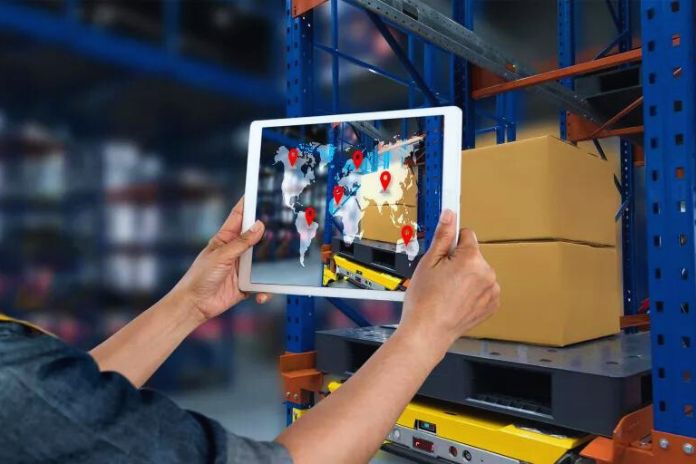Retailers are competing more than ever to fulfill orders and customer requests faster than the competition. Global consumer appetite peaked in 2019, with trade sales reaching $25 trillion. Despite a dip since the start of the COVID-19 pandemic, the general upward trend will continue over the next decade.
More people consume larger goods; buyer preferences and customer behavior are changing. They expect retailers to have all the goods they want to buy at any time. Online retailers must deliver quickly and have a simple return process by the next day. The customer service requirement is 24/7 omnichannel availability. In addition, the customer always wants to know what stage his order is at.
Traceability And Transparency In Deliveries Are Becoming Increasingly Important
It is common practice for most mail-order companies to track orders and see when delivery will arrive. What has long since become commonplace in the consumer sector was not possible in the B2B environment for a long time. Knowing the probable time of arrival of a truck (“ETA” = “Estimated Time of Arrival”) is an essential key figure to minimize waiting times at loading ramps and to plan capacity better there.
However, real-time supply chain transparency was not possible in the B2B environment for a long time. On the one hand, this is due to the sheer size and heterogeneity of the market. In Europe alone, around 600,000 logistics providers use up to 600 telematics systems to determine the position and other data of their vehicles. On the other hand, until a few years ago, it was impossible to set up such a complex tracking system. There needed to be more sufficient data and affordable computing capacity.
AI Makes It Possible, Calculate The ETA In Real Time
With modern algorithms, artificial intelligence, and big data, ETAs of deliveries can now be predicted and communicated so precisely that possible delays no longer lead to long waiting times at loading docks. The French company Shippeo provides a platform solution that transfers this scenario, known from the B2C sector, into the B2B context based on AI: dates for goods deliveries are calculated with an accuracy of up to 98 percent.
Enormous Value Creation Lever For Retailers
Retailers, in particular, benefit from this technology. In supermarkets, employees expect the truck with new goods to arrive at a specific time. If the driver is significantly late, they call the warehouse; from there, the shipping company will be contacted and try to reach the driver. This is a time-consuming and inefficient process. If the supermarket is informed early via a tracking system that the truck will arrive late and when it is expected to come, this time-consuming communication is no longer necessary.
This leads to an overall increase in efficiency. Even when calls are received, customer service based on such a system can respond better to customer inquiries and increase customer satisfaction. If it is known that delivery will be delayed, employees do not have to wait unnecessarily at the ramp but can do other tasks. Buyers also benefit from real-time data. They give you an overview of whether deliveries arrived on time.
This also makes checking key figures and compliance with service-level agreements easier. In addition, the downtime in front of the ramp can be better planned and shortened. Above all, the often very high fines for late deliveries can be significantly reduced. For yard and warehouse planning, Shippeo offers a solution that allows shippers to reduce the average idle time of a truck from 110 to 60 minutes, i.e., almost by half.
Using Machine Learning For Real-Time Supply Chain Transparency
Data must be collected every three to five minutes to ensure complete shipment tracking. There is also warehouse data and traffic information from which the truck speed is calculated. This data comes from several telematics providers in Europe. The usual break or loading times at the ramp also need to be considered. External data sources such as weather or traffic jam forecasts are also necessary to calculate the ETA from the real-time data as accurately as possible. Ultimately, data is required from up to 500 different sources.
Processing the large amount of data collected is a classic use case for machine learning technology. All data, especially GPS and traffic data, is aggregated and analyzed to calculate the estimated arrival time of the shipment. The forecasts are becoming increasingly refined thanks to learning algorithms. If there is always a traffic jam on a specific section of the route at a particular time of day, the algorithm will include this information in future calculations. The loading and unloading times at different stations can also be better estimated over time.
Collaboration And Breaking Down Data Silos Create Added Value For Everyone
As in other industries, significant challenges that impact multiple stakeholders are best solved when industry members collaborate, share, and combine their knowledge, data, and insights. The collaboration of all players significantly affects increasing efficiency, streamlining processes, accelerating innovation, and solving other challenges in the economic sector. It is essential to break down the silos of individual companies and integrate the data sets within them on one platform. This creates maximum benefit for all partners in the supply chain.
Also Read: 6 Advantages Of An ERP For Your Supply Chain Management

